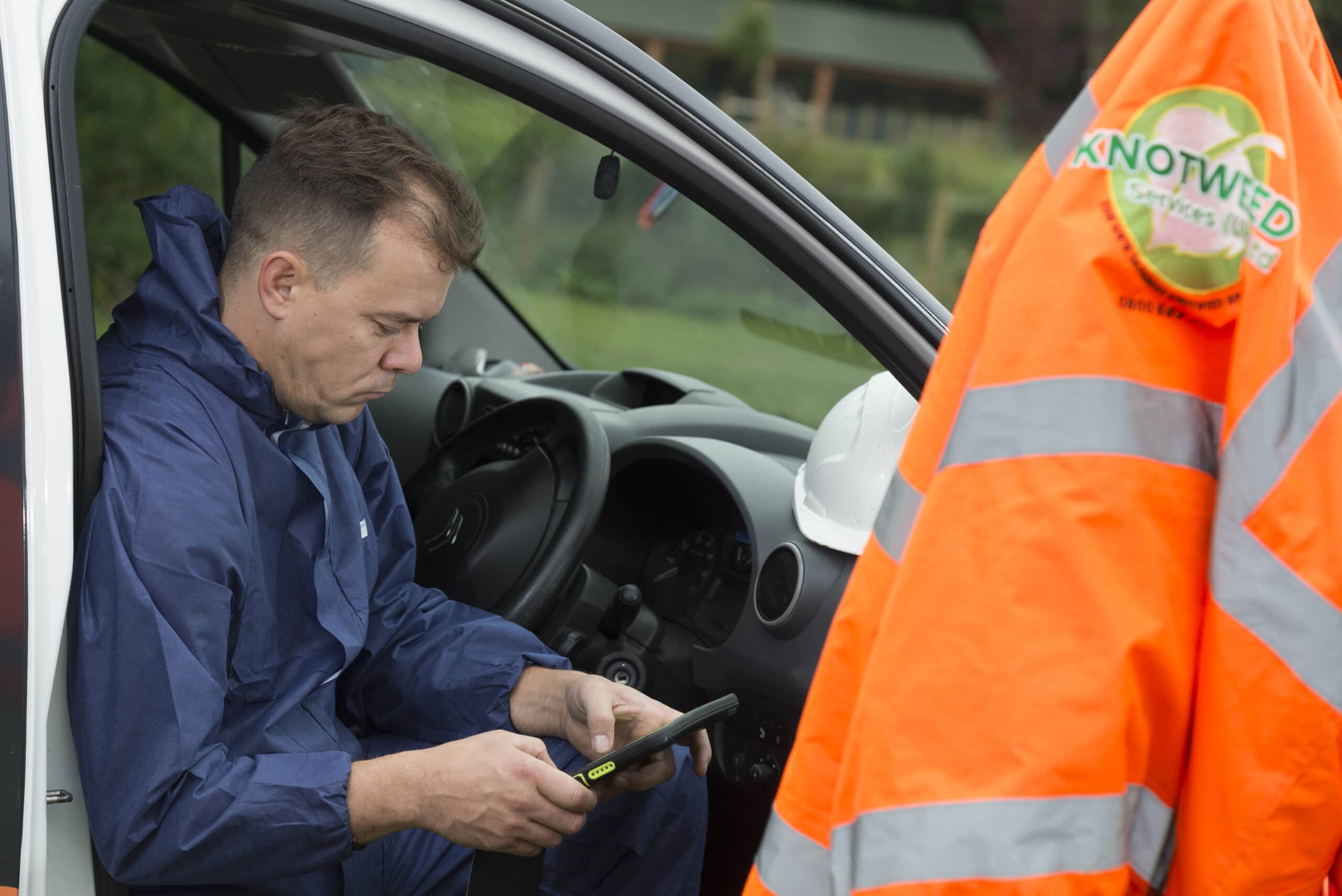Size covered: 549 m2
BACKGROUND
Knotweed Services (UK) Ltd were contacted by a commercial client in Walsall to organise a site survey to determine who’s responsibility it was to deal with the Japanese Knotweed on site. We were told a building surveyor had identified the JKW whilst conducting a survey. Our client informed us the Knotweed was located within metres of the site boundary.
SITE SURVEYS
At time of survey, our client informed us that they will soon be leasing the building to Screwfix. A building surveyor informed our client that there was JKW within metres of their property boundary. I confirmed on my visit that although there was no Japanese Knotweed on the premises of our clients land, a huge 5 zones of thick/dense stands of Japanese Knotweed was identified on neighbouring property which was located 1 metre away from our clients property boundary.
Our client and neighbours spoke and it was decided between the two that the neighbours would take ownership and deal with the problem that was causing the disruptions.
Whilst the neighbouring property didn’t have any plans to build/develop on the site, It was advised that a 6 year treatment plan should be considered to reduce the mass area of infestation incase of any developments on the site in the future.
I informed neighbouring property that my plan would be for myself & another technician to visit the site twice a year for 4 years to treat the infestation, followed by 2 years of monitoring the zones. Due to the amount of infestation, I informed it would take 2 days to stem inject/1 day to spray. The plan would be to burn all dead canes during the offsite disposal (if permission is granted).
If during the 6 year treatment plan they decide to build/develop on the site, the management plan will need to be upgraded to an excavation which due to the size of the infestation will inevitably be very costly.
I informed that a quotation for an excavation can be obtained in the future if required.
MAPPING
The mapping stage of our plans is crucial to identify the location of the infestation. This not only helps to indicate the proximity to boundaries/habitable space & outbuildings and the associated RICS classification, but also identifying the possible migration (7m buffer zone).
See Site Map below:

TREATMENT
It was decided that the neighbouring property would deal with the infestation, so a report and quotation for 549m2 of Japanese Knotweed was prepared.
We had a call shortly after to say they were happy to proceed. Our system was updated with new details and a management plan was prepared.
Due to the time of year, our client was informed that no treatment will be conducted until the growing season in 2019 begins.
We look forward to returning to the site in June/July to begin the treatment process.



